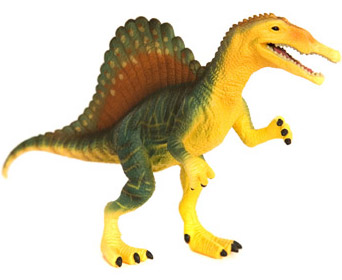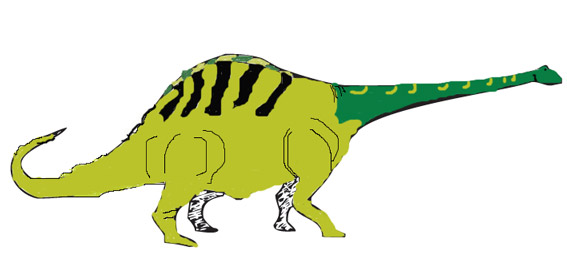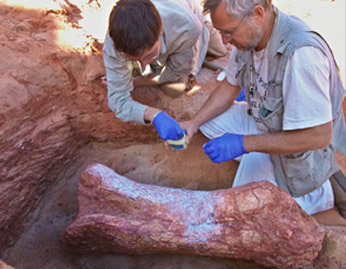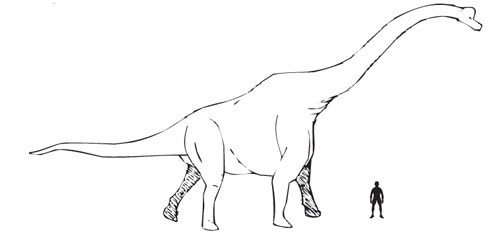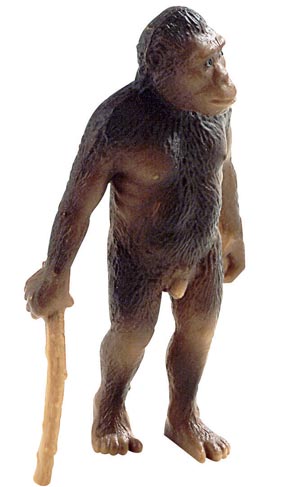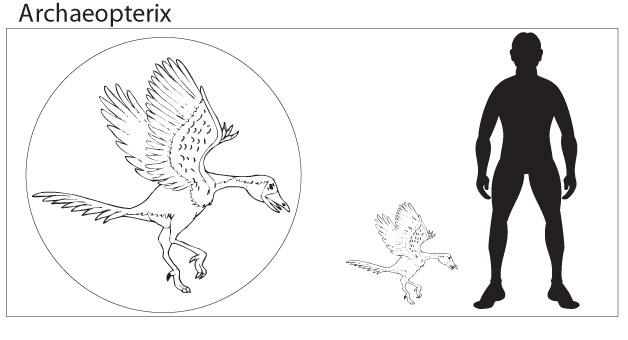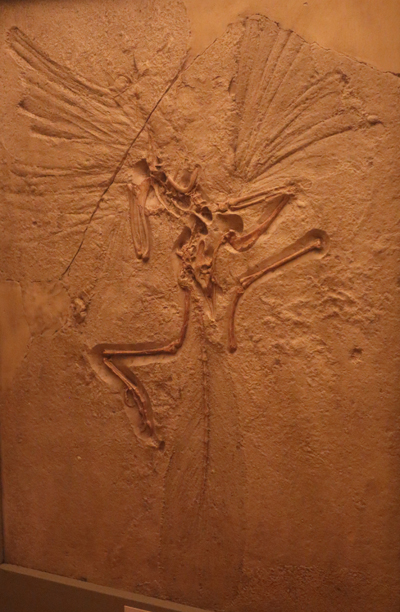Research Proves that Dinosaurs were Airheads
Dinosaurs for all their spectacular features such as huge teeth, enormous bodies and strange armour have often been regarded by many as being extremely stupid creatures with tiny brains, new research suggests that dinosaurs were airheads. Whilst it is true that many types of dinosaur, the stegosaurs and the sauropods for example, had very small brains in proportion to their bodies, other dinosaurs, although not likely to ever be regarded as highly intelligent, did possess relatively big brains given their body size – troodontids are examples of this type of dinosaur.
Troodonts such as Saurornithoides and troodon are animals of the Northern Hemisphere and Late Cretaceous. Relatively small animals, most of this type of dinosaur are believed to have been under 2 metres long (most of this being tail), but they did have large eyes (indicated by the big orbits in what skull material has been found), and relatively large brains. These types of dinosaurs are depicted as warm-blooded, quick, agile, little hunters with excellent co-ordination and keen senses, attributes associated with a large brain capable of processing lots of information.
Measuring Intelligence
Many of us may be familiar with a measure of intelligence called IQ, this is an abbreviation of the term Intelligence Quotient, a measure of intelligence amongst a single species such as human intelligence for example. When it comes to comparing intelligence amongst different types of animal, the process becomes more complicated, especially when the animals are extinct and scientists only have the fossil record to go on as in the case of the dinosaurs.
A second measure is often used, this is EQ (not to be confused with the human concept of emotional intelligence), in this sense the term EQ stand for Encephalisation Quotient, a comparison of brain size to body mass. The principle is that the greater the proportion of brain mass in comparison to the size of the body the more intelligent the animal in relation to another organism with the same sized brain but a bigger body.
This is only a relative measure and imprecise when used to study extinct animals. Using these principles, the large herbivorous sauropods and stegosaurs score very poorly, indicating low intelligence where as the dromaeosaurs and animals such as Troodon score relatively highly.
Having a high or low EQ score does not necessarily indicate intelligence. The humble pigeon, for instance, not regarded as particularly intelligent is capable of navigating huge distances and demonstrating very sophisticated behaviour. Members of the Corvidae family (crows, rooks, ravens etc.) do not have bigger brains when compared to similar sized wading birds but they are regarded as more intelligent showing learning capability, problem solving and considerable memory.
Dinosaurs were Airheads
In a recently published paper in the scientific journal “The Anatomical Record” a team of American researchers have demonstrated that the skulls of several different types of dinosaurs were sophisticated structures and that they possessed very complex olfactory areas and nasal passages as well as a number of air cavities. Perhaps dinosaurs were light headed or simply airheads? The research does reveal how well designed and evolved the skulls of such animals were.
Ohio University scientists Lawrence Witmer and Ryan Ridgeley used scanning technology to build up sophisticated 3-dimensional pictures of both meat-eating and plant-eating dinosaur skulls. Using the images and computer models their work has generated, the researchers were able to show the complex structure of the olfactory areas and nasal passages determining a clearer understanding of the physiology of the animal’s airways.
This work has important implications for how important a sense of smell was for dinosaurs and the structure of airways will influence the vocalisation of these animals. Skull material is extremely helpful to palaeontologists, it is often used as diagnostic material to help determine the relationships between different genera or to define a new species.
The team examined the skulls of two predators and two plant-eating dinosaurs. The meat-eaters were the infamous and very well known Tyrannosaurus rex and the less well known advanced abelisaurid Majungatholus (also called Majungasaurus). Tyrannosaurus rex is a good candidate for this type of study, a number of skulls of this Late Cretaceous dinosaur are known and work on the extensive olfactory areas in the skull has already been published.
Majungatholus was a less obvious candidate. However, at least one nearly complete skull of this meat-eater, whose fossils have been found on Madagascar has been discovered and it does represent an entirely different type of carnivorous dinosaur compared to the tyrannosaurs. The shape of the skull of Majungatholus is quite different, the head was broad and short with thickened bones around the nasal areas (the naris). The lower jaw as quite delicate and when compared to the tyrannosaurs the mouth was narrow.
The scientists also studied the skulls of two plant-eating dinosaurs, both members of the thyreophoran (armoured dinosaur) group. The herbivores studied were Panoplosaurus (Late Cretaceous, North American nodosaurid with at least three fossilised skulls to study) and Euoplocephalus a well-known ankylosaur. Analysis of extant species such as crocodiles and ostriches were also undertaken by the research team.
Study of Predatory Dinosaurs
The study of the predatory dinosaurs revealed extensive olfactory areas, an arching airway that went from the nostrils to the throat, and many sinuses,the same cavities or pockets that give us sinus headaches. Overall, the amount of air space was much greater than the brain cavity. The air chambers may have acted as resonating chambers to provide each dinosaur with a distinctive call or voice.
The air spaces would have also served to lighten the weight of the skull, with the team estimating that the presence of the air cavities enabled the weight of the head of Tyrannosaurus rex to be reduced by up to 18% without any detrimental effect on the strength of the structure – very important when the forces exerted by biting or holding struggling prey are considered. The researchers have estimated the box-like and massive head of a Tyrannosaurus would have weighed approximately 500 kgs, without the air cavities the head could have weighed over 100 kilogrammes more.
Such a heavy head would have required enormous neck muscles to support it, perhaps the air cavities and the famously small limbs of T. rex are adaptations to help reduce the weight at the front end of the animal.
A 3-D Computer Model of Tyrannosaurus rex
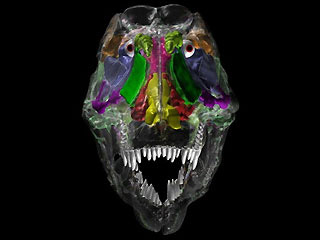
Picture credit: Lawrence Witmer (Ohio University)
The picture shows a computer model of Tyrannosaurus rex with the various internal air cavities and air passages highlighted in different colours. Work from other scientists has indicated that approximately 50% of the T. rex brain (a brain that weighed as much as a bag of sugar), was dedicated to the olfactory function. It seems that the sense of smell was extremely important to this particular dinosaur.
The 3-dimensional study of the thyreophorans (armoured dinosaur), contrasts with the work carried out on the meat-eating dinosaurs. Unlike the large, straight, uncomplicated nasal passages of the theropods, the research team found airways that were long, twisted and convoluted.
The winding air passages were positioned alongside large blood vessels, the study showed, suggesting heat transfer. So when the armoured dinosaurs inhaled, the blood would have warmed that inspired air before it reached the lungs. Alternatively, these structures could have helped these large animals retain heat, perhaps absorbing heat back into the animal as they exhaled.
In addition, some of the heat from the blood vessels may have been transferred into the winding nasal passages, cooling the blood before it reached the brain.
The twisty nasal passages also probably acted as resonating chambers, affecting how these armoured dinosaurs vocalised.
“The airways may have been slightly different in each animal”, Witmer commented, “giving the animals subtle differences in their voices”.
Everything Dinosaur stocks a huge range of award-winning prehistoric animal figures and replicas including both plant-eating and meat-eating dinosaurs: Dinosaur Models and Toys.
